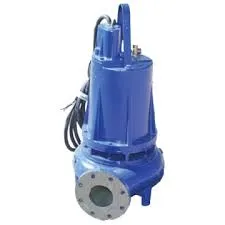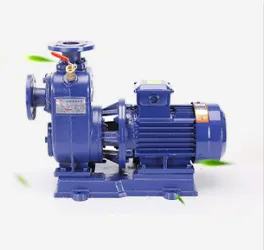TEL:
+86 13120555503
Frisian
- Afrikaans
- Albanian
- Amharic
- Arabic
- Armenian
- Azerbaijani
- Basque
- Belarusian
- Bengali
- Bosnian
- Bulgarian
- Catalan
- Cebuano
- Corsican
- Croatian
- Czech
- Danish
- Dutch
- English
- Esperanto
- Estonian
- Finnish
- French
- Frisian
- Galician
- Georgian
- German
- Greek
- Gujarati
- Haitian Creole
- hausa
- hawaiian
- Hebrew
- Hindi
- Miao
- Hungarian
- Icelandic
- igbo
- Indonesian
- irish
- Italian
- Japanese
- Javanese
- Kannada
- kazakh
- Khmer
- Rwandese
- Korean
- Kurdish
- Kyrgyz
- Lao
- Latin
- Latvian
- Lithuanian
- Luxembourgish
- Macedonian
- Malgashi
- Malay
- Malayalam
- Maltese
- Maori
- Marathi
- Mongolian
- Myanmar
- Nepali
- Norwegian
- Norwegian
- Occitan
- Pashto
- Persian
- Polish
- Portuguese
- Punjabi
- Romanian
- Russian
- Samoan
- Scottish Gaelic
- Serbian
- Sesotho
- Shona
- Sindhi
- Sinhala
- Slovak
- Slovenian
- Somali
- Spanish
- Sundanese
- Swahili
- Swedish
- Tagalog
- Tajik
- Tamil
- Tatar
- Telugu
- Thai
- Turkish
- Turkmen
- Ukrainian
- Urdu
- Uighur
- Uzbek
- Vietnamese
- Welsh
- Bantu
- Yiddish
- Yoruba
- Zulu
Telephone: +86 13120555503
Email: frank@cypump.com
feb . 18, 2025 08:14 Back to list
septic pumps
Selecting the right pump for a septic tank system is crucial to ensure its longevity and efficiency. Septic systems require specialized pumps that can manage the unique demands of handling waste and liquids with varying levels of viscousness. With advances in septic technology and an increasing emphasis on environmentally sound practices, a range of pumps has emerged that meet diverse needs while also adhering to modern standards. This article aims to explore essential features, types, and considerations for choosing a septic tank pump, while stressing the importance of professional guidance and regular maintenance.
Professional consultation is indispensable in the selection and installation of a septic tank pump. Certified installers and inspectors bring an element of expertise that encompasses site evaluation, correct sizing, and adherence to local regulations and environmental guidelines. They can appropriately address safety variables such as electrical considerations and emergency backup solutions to prevent system failure during power outages. Their insights contribute not only to optimal performance but also extend the pump’s lifespan. Maintenance plays a critical role in sustaining the effectiveness of septic systems. Regular inspection for wear and corrosion, cleaning filters and screens, and verifying electrical connections ensure persistent reliability. Familiarity with signs such as frequent cycling, unusual noise, or reduced outflow provides early indication of pump malfunction, enabling timely interventions to mitigate potential damages. Environmental stewardship is another compelling reason to invest in quality septic tank pumps. Adequately functioning pumps minimize the risk of leaks, which can contaminate groundwater and lead to health hazards. Selecting energy-efficient models reduces power consumption, supporting sustainable operations, and potentially lowering utility costs. In conclusion, choosing the right pump for your septic tank involves comprehensive knowledge of system demands, pump types, and technical requirements. It leverages professional expertise to ensure both compliance and performance while emphasizing regular maintenance to uphold system health. These factors collectively contribute to a septic system that not only functions optimally but also aligns with environmental and economic goals. High-quality pumps are more than devices; they represent a commitment to safety, reliability, and sustainable practices in waste management.


Professional consultation is indispensable in the selection and installation of a septic tank pump. Certified installers and inspectors bring an element of expertise that encompasses site evaluation, correct sizing, and adherence to local regulations and environmental guidelines. They can appropriately address safety variables such as electrical considerations and emergency backup solutions to prevent system failure during power outages. Their insights contribute not only to optimal performance but also extend the pump’s lifespan. Maintenance plays a critical role in sustaining the effectiveness of septic systems. Regular inspection for wear and corrosion, cleaning filters and screens, and verifying electrical connections ensure persistent reliability. Familiarity with signs such as frequent cycling, unusual noise, or reduced outflow provides early indication of pump malfunction, enabling timely interventions to mitigate potential damages. Environmental stewardship is another compelling reason to invest in quality septic tank pumps. Adequately functioning pumps minimize the risk of leaks, which can contaminate groundwater and lead to health hazards. Selecting energy-efficient models reduces power consumption, supporting sustainable operations, and potentially lowering utility costs. In conclusion, choosing the right pump for your septic tank involves comprehensive knowledge of system demands, pump types, and technical requirements. It leverages professional expertise to ensure both compliance and performance while emphasizing regular maintenance to uphold system health. These factors collectively contribute to a septic system that not only functions optimally but also aligns with environmental and economic goals. High-quality pumps are more than devices; they represent a commitment to safety, reliability, and sustainable practices in waste management.
Share
Next:
Latest news
-
Reliable Non-Clog Sewage Pumps with GPT-4-Turbo Tech
NewsAug.04,2025
-
High-Performance Air Pumps for Sand & Gravel | Efficient Transport
NewsAug.03,2025
-
ISG Series Vertical Pipeline Pump - Chi Yuan Pumps Co., LTD.|Energy Efficiency, Corrosion Resistance
NewsAug.03,2025
-
ISG Series Pipeline Pump - Chi Yuan Pumps | Energy Efficiency&Compact Design
NewsAug.03,2025
-
ISG Series Vertical Pipeline Pump - Chi Yuan Pumps Co., LTD.|High Efficiency, Low Noise, Durable
NewsAug.02,2025
-
ISG Series Vertical Pipeline Pump - Chi Yuan Pumps | High Efficiency, Low Noise
NewsAug.02,2025










